Imagine a world where factories stand not as symbols of pollution but thrive in harmony with the environment. This vision is becoming a reality through the concept of Eco-Industrial Parks (EIP) – a revolutionary approach to sustainable industrial development. If you’re seeking green investment opportunities, follow our post to unlock the eco industrial park model.
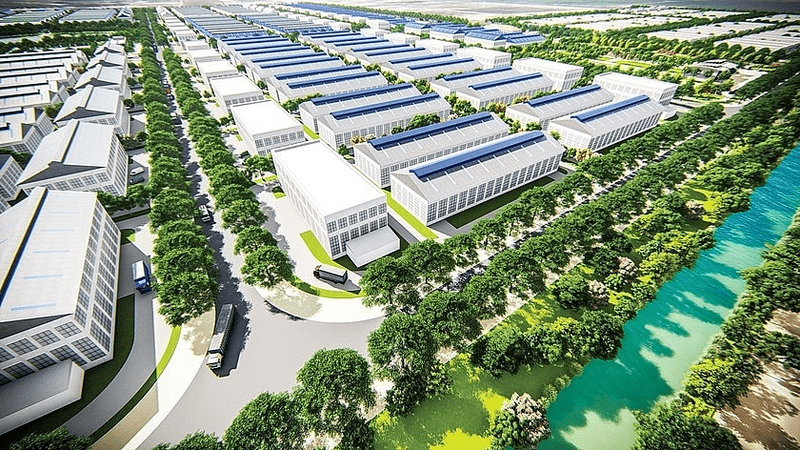
1. Introduction to Eco-industrial Parks (EIPs)
According to Decree No. 82/2018/ND-CP, Eco Industrial Parks (EIPs), also known as an Eco-Industrial Estate or Green Industrial Parks, is an industrial area or complex designed with a strong emphasis on environmental sustainability and resource efficiency. The primary goal of an Eco Industrial Park is to minimize its negative environmental impact while maximizing economic and social benefits.
Eco-industrial parks serve as models for sustainable industrial development, demonstrating that economic growth can go hand in hand. EIPs aim to minimize environmental impact, enhance resource efficiency, and foster eco-friendly industrial practices.
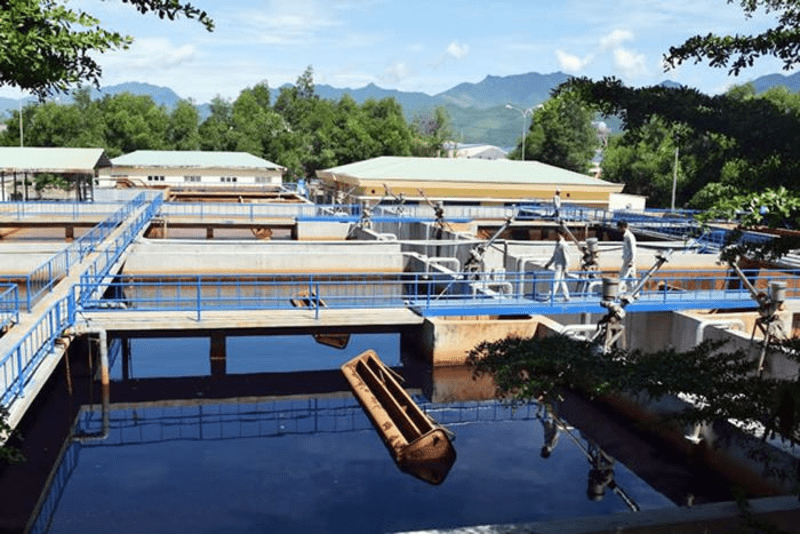
For example, the Hoa Khanh EIP in Da Nang implemented a Resource Efficient and Cleaner Production (RECP) project to process and exchange waste paper. Instead of burning or dumping tons of paper waste, companies within the park can trade it, diverting over 1,000 tons from landfills annually.
Another example is Gian Khau EIP in Ninh Binh which runs projects to utilize renewable energy, harnessing the sun’s power to generate 5.4 MW of clean electricity, significantly reducing their reliance on fossil fuels.
2. Specific characteristics of Eco-industrial parks
Beyond the standard features of an industrial park, EIPs offer a unique set of characteristics that attract sustainability-driven businesses and promote a circular economy. Here’s a closer look at what sets them apart:
2.1. Resource efficiency
Materials exchange:
Eco-industrial parks (EIPs) tackle the problem of industrial waste generation by facilitating the exchange of by-products and waste materials between different companies, promoting a circular economy.
For example, a food processing plant that generates a large amount of organic waste can give it to an organic fertilizer producer as input for fertilizer composition. Such initiatives are supported by Vietnam’s Circular Economy Roadmap, which encourages resource sharing and waste minimization in industrial zones.
Energy efficiency:
According to the Asia Natural Gas & Energy Association, Vietnam has committed to achieving a net zero carbon target by 2050 by reducing reliance on fossil fuels to 30% by 2030.
With that, EIPs incorporate energy-efficient technologies such as solar panel arrays and energy-efficient LED lighting and promote renewable energy sources like solar and wind power. For urban planners and policymakers, EIPs are just the right solution to help meet the target.
Take Hoa Binh Industrial Park in Bac Ninh for instance. In 2021, 2 companies (Shire Oak International and Hoa Binh Infrastructure Investment) joined hands-on projects to install solar panels. The project is expected to generate approximately 59 million kWh of electricity per year and reduce carbon emissions by 49,733 tons per year.
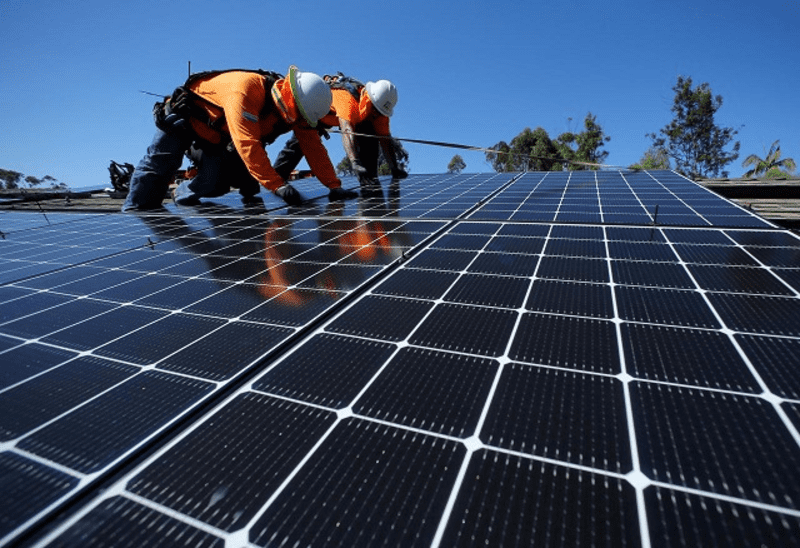
2.2. Environmental management
Waste reduction:
For manufacturing businesses, especially those in heavy electronics and textiles, industrial waste, if not properly managed, will end up in landfill, creating negative impacts on the environment.
With “sustainability” at the core, EIPs emphasize recycling, reusing, and implementing proper waste management practices. This effort is further supported by Vietnam’s Environmental Protection Law, which mandates waste reduction and resource recycling for industries.
Water conservation:
The clean water supply system is considered a crucial factor in the development of eco-industrial parks, contributing significantly to attracting investors. This can be achieved by leveraging the water directly from sources such as nearby rivers, lakes,…
Another well-known practice is to harness the power of rainwater and implement proper irrigation systems to ensure precious resources aren’t wasted.
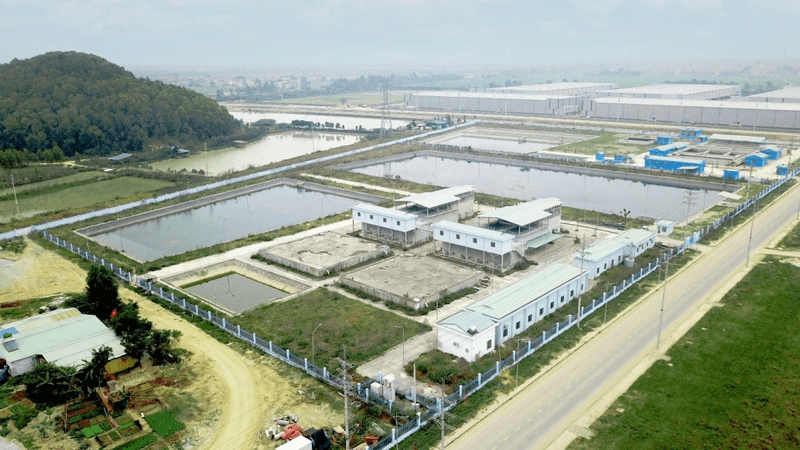
2.3. Green infrastructure
Green spaces:
Eco-industrial parks are specifically designed with green spaces, parks, and natural habitats to promote biodiversity and improve the overall environment. In particular, trees and plants can be natural air purifiers, filtering out pollutants and promoting healthier lives for people around the park.
Hoa Khanh Industrial Park in Da Nang owns a 5-hectare botanical garden, which helps improve air quality and provides habitat for local species.
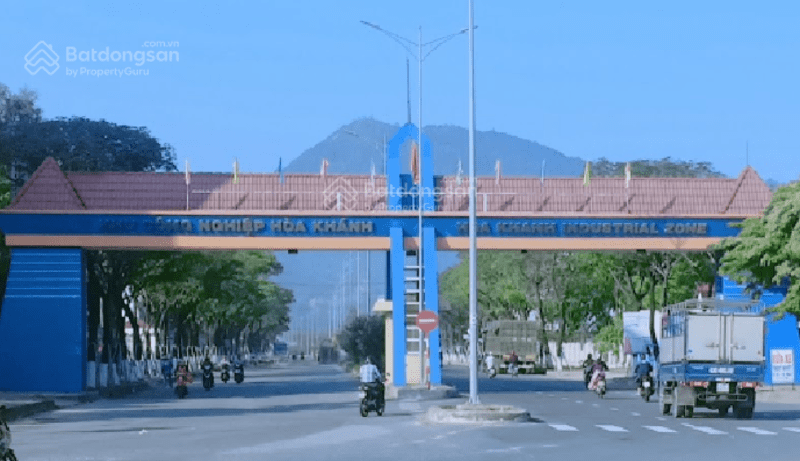
Sustainable construction:
Eco-industrial parks should be economically friendly right from the construction phase by adopting green building standards and sustainable construction practices. Some well-known green building standards to be named:
- LEED (Leadership in Energy and Environmental Design) certification: a green building certification that ensures the construction involves the utilization of energy-efficient, resource-conscious practices.
- Locally sourced materials: using local sourcing practices not only saves transportation footprint but also supports the growth of local businesses
- Energy-efficient practices: for example, this involves using natural lighting and ventilation instead of air conditioning and artificial lighting, thus, lowering energy consumption.
2.4. Environmental certification
Environmental standards:
Most EIPs in Vietnam are striving for ISO 14001 certification, an Environmental Management System which is a measurable and verifiable proof showing their commitment to environmental conservation. EIPs with such certifications also appeal more to environmentally-conscious investors and businesses
Firstly, as it requires regular review of the criteria listed and updates to the Environmental Management System, this ensures continuous improvement to hit bigger environment-focused goals.
Secondly, enterprises with the EIP community with ISO can share best practices to improve together. Besides, there are many certifications with the same purpose:
- EDGE (Excellence in Design for Greater Efficiencies): award for cost-effective and water efficiency measures in construction.
- Green Mark Label: Vietnam’s national eco-labeling program for products and services with minimal environmental impact. This applies to building materials, chemicals, and other items used in EIPs.
- CarbonNeutral or similar carbon neutrality certifications: Demonstrate an EIP’s commitment to mitigating its carbon footprint.
Eco-labeling:
The criteria to acquire the eco-label is that products are manufactured at sites complying with environmental protection laws. Eco-labeling is a brand’s guarantee to drive consumers to adopt environmentally friendly products. Also, setting standards for using eco-labeling drives internal improvements, such as responsible sourcing strategy and sustainable production, all of which lead to operational efficiency and cost savings.
2.5. Community engagement:
Stakeholder involvement:
EIP itself is a “community” of businesses that cooperate not just with each other but with local communities and government agencies on planning and decision-making processes.
For example, common issues that are usually put on the table are waste management, green infrastructure development, and even educational programs. Public forums foster transparent communication, ensuring voices are heard and concerns addressed. This shared responsibility empowers communities, fostering a sense of ownership and commitment to the EIP’s success.
Education and awareness:
Eco-industrial parks in Vietnam prioritize environmental education and awareness campaigns such as
- Interactive exhibition: Immersing school children in sustainable practices within the EIP.
- Online campaigns and local influencer partnerships: Spreading awareness through digital platforms and offline channels.
- Shared community class: Fostering hands-on learning and knowledge exchange between residents and companies.
These initiatives foster environmental consciousness within and beyond the EIPs, paving the way for a greener future in Vietnam.
3. Benefits of Eco-industrial parks
Eco industrial parks go beyond being just industrial areas; they are becoming symbols of sustainability, intertwining environmental care, economic growth, and community health. Let’s explore the various advantages that EIPs bring, through real-life examples:
3.1 Environmental benefits
EIPs are at the forefront of environmental stewardship. They prioritize eco-friendly practices that reduce pollution, conserve resources, and protect ecosystems. They also harness renewable energy sources, such as solar and wind power, contributing to a cleaner environment.
Additionally, EIPs incorporate efficient wastewater treatment systems and emphasize recycling and responsible resource management, complying with environmental protection laws.
In Vietnam Khanh Phu Industrial Park, over 80% of waste is recycled, saving €64,000 yearly and preventing 500 tons from going to landfills. Moreover, Hoa Khanh IP in Vietnam uses rainwater for harvesting, cutting water use by 10% while Tra Noc IP allocates land for parks, to attract local wildlife.

3.2. Economic advantages
Companies operating within these parks often benefit from tax incentives, reduced operating costs, and increased competitiveness. Shared infrastructure and efficient resource utilization further reduce expenses, while green production techniques lead to long-term cost savings.
Job creation is another crucial economic aspect, as EIPs attract investors, generating employment opportunities within their communities.
Vietnam’s Dinh Vu Cat Hai industrial park estimates €5 million in yearly savings through shared wastewater treatment facilities. Also, the investment in green production techniques might be costly in the short-term but it will lead to cost savings in the future as businesses can avoid the cost of waste treatment and solve brand scandals around environmentally ill practices.
3.3. Community and social impact
Businesses within EIPs gain several distinct advantages such as becoming part of a collaborative ecosystem that promotes resource sharing, innovation, and knowledge exchange; accessing a sustainable supply chain, and reducing waste and costs.
EIPs often require companies to adhere to higher environmental and social responsibility standards, encouraging responsible and ethical business practices. Therefore, being situated in a sustainable environment enhances their corporate image, attracting environmentally conscious consumers and investors.
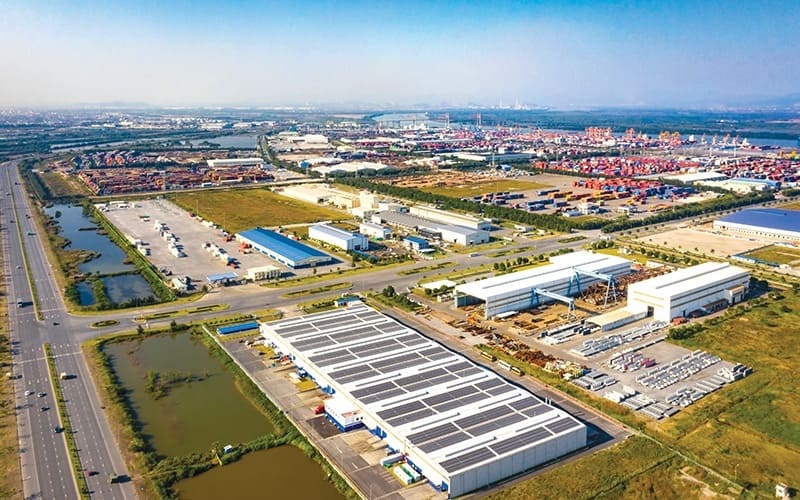
4. Standards requirements to establish an eco-industrial park
According to article 37 of Decree 35/2022/ND-CP, there are compliance criteria that investors and businesses should take into account when establishing eco-industrial parks:
- Adhere to regulations in 6 key areas within 03 years before the date of registration for certification of the eco industrial park:
- Investment Law: Ensuring proper investment procedures, permits, and adherence to any financial regulations regarding the EIP’s development.
- Enterprise Law: Complying with all legal requirements for establishing and operating businesses within the EIP, including company registration, licensing, and labor practices.
- Construction Law: Adhering to building codes, environmental regulations, and safety standards during the construction phase of the EIP.
- Land Law: Ensuring proper land acquisition, usage, and development procedures are compliant with zoning and environmental regulations.
- Environmental Protection Law: Implementing measures to minimize environmental impact, manage waste efficiently, and protect natural resources within and around the EIP.
- Labor Law: Guaranteeing fair labor practices, employee well-being, and compliance with wage and safety regulations for all workers involved in the EIP’s development and operation.
- Comply with infrastructure requirements for industrial parks, which is to have fundamental services and amenities such as electricity, water, information access, fire prevention and control, wastewater treatment, and other essential provisions.
- Efficient use of resources and clean production: practices ensuring optimal resource utilization and fostering clean production methods. At least 20% of enterprises in the eco industrial parks must acquire certification for this.
- Regarding land allocation, at least 25% must be used for tree planting, traffic, and the development of public technical utilities and social infrastructure to enhance environmental aesthetics.
- Industrial symbiosis: Engage in at least 1 industrial symbiosis within the industrial park, where participating enterprises are required to implement production and environmental management systems by the relevant ISO (International Organization for Standardization) standards.
- Social infrastructure: Establish facilities such as dwellings, and public services, supporting worker well-being and community engagement.
- Environmental protection monitoring: Implement a robust mechanism for monitoring and managing environmental protection, such as by tracking the input and output of products produced every year
- Implement environmental protection report publication: Enforce the publication of environmental protection reports to enhance accountability and transparency.
5. Vietnam’s eco-industrial park status
- Current situations
The world is witnessing a surge in eco industrial parks (EIPs) as nations strive for sustainable industrial development. Leading examples include Kalundborg in Denmark, renowned for its closed-loop systems and industrial symbiosis, and Tianjin Eco-City in China, with advancements in green construction methods and renewable energy utilization.
In Vietnam, there are over 400 industrial parks, but a few of those have plans to convert themselves into eco-industrial parks. Some successful examples can be highlighted as:
- Phong Phu industrial park in Ho Chi Minh City: this is a manufacturing hub of textiles for domestic use and export. With land coverage up to 50 hectares, the industrial park incorporates centralized wastewater treatment, solar power, and energy-saving practices
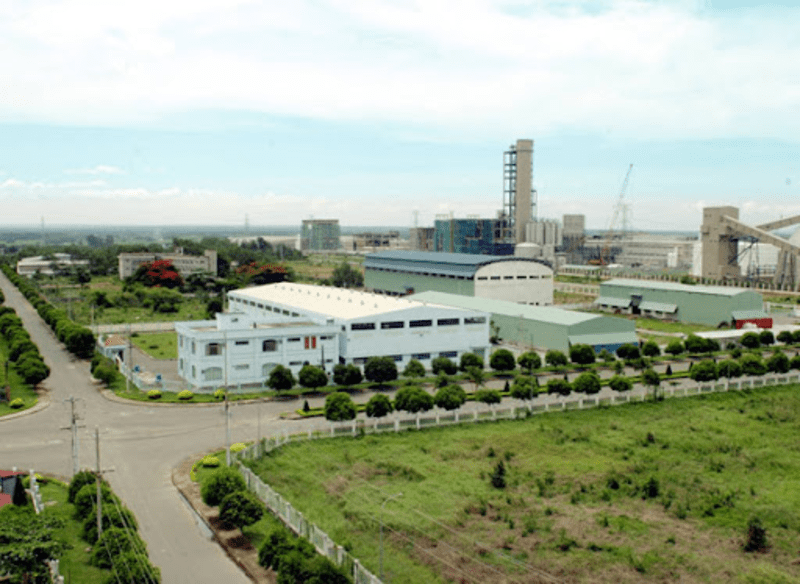
- Dinh Vu Cat Hai Industrial Park in Hai Phong City: with a coverage of 22,500 hectares, this is one of the key coastal economic zones in Vietnam, connecting Hai Phong and the north coast region. It is also a sustainable zone with eco-friendly technologies such as wastewater treatment, materials exchange, and green transportation.
- Future outlook
During the 2015-2019 period, Vietnam conducted pilot transformations of several traditional industrial parks into eco industrial park models, including Hoa Khanh in Da Nang City, Khanh Phu in Ninh Binh Province, and Tra Noc 1 and 2 in Can Tho City.
From 2020 onwards, the conversion to eco-industrial parks has extended to other industrial zones such as Dinh Vu (Hai Phong City), Amata (Dong Nai), and Hiep Phuoc (Ho Chi Minh City).
As of now, 7 industrial parks are undergoing the conversion to eco industrial parks with support from the Ministry of Planning and Investment. The support primarily focuses on technical solutions to enhance resource efficiency, promote cleaner production, and actualize symbiotic industrial linkages.
Therefore, the transition from conventional industrial parks to eco-industrial park models is not limited to parks under the cooperation between the Ministry of Planning and Investment and international sponsors but has also spread to other industrial parks with self-funded initiatives from private sectors (e.g., Nam Cau Kien Industrial Park in Hai Phong, industrial parks by Becamex Group, green and energy-saving industrial parks by VSIP Group).
Emerging technologies have the potential to enhance Vietnam’s EIPs:
- Internet of Things (IoT): Real-time data monitoring and analysis will optimize resource usage and predict maintenance needs, ensuring efficient operations.
- Artificial Intelligence (AI): AI-powered systems can streamline waste management, optimize energy distribution, and develop innovative solutions for industrial symbiosis.
- Circular Economy Principles: Embedding principles throughout EIP design and operations will minimize waste and maximize resource utilization.
In conclusion, Vietnam’s eco-industrial park landscape is thriving, fueled by existing successes, ambitious expansion plans, and a forward-looking embrace of technology. By nurturing this green industrial revolution, Vietnam is not only safeguarding its environment but also positioning itself as a global leader in sustainable development.
